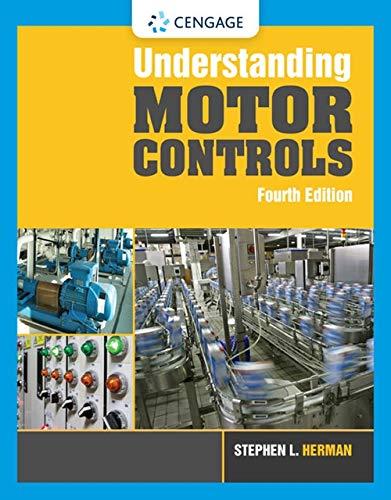
Automotive Technology: A Systems Approach (MindTap Course List)
6th Edition
ISBN: 9781133612315
Author: Jack Erjavec, Rob Thompson
Publisher: Cengage Learning
expand_more
expand_more
format_list_bulleted
Concept explainers
Question
Chapter 10, Problem 2RQ
To determine
Whether the statement “Transmission is attached while removing the engine in a front wheel drive vehicle”, is true or false.
Expert Solution & Answer
Trending nowThis is a popular solution!

Students have asked these similar questions
Air at T₁-24°C, p₁-1 bar, 50% relative humidity enters an insulated chamber operating at steady state with a mass flow rate of 3
kg/min and mixes with a saturated moist air stream entering at T₂-7°C, p2-1 bar. A single mixed stream exits at T3-17°C, p3-1 bar.
Neglect kinetic and potential energy effects
Step 1
Your answer is correct.
Determine mass flow rate of the moist air entering at state 2, in kg/min.
m2 = 2.1
Hint
kg/min
Using multiple attempts will impact your score.
5% score reduction after attempt 2
Step 2
Determine the relative humidity of the exiting stream.
Փ3 =
i
%
Attempts: 1 of 3 used
A reservoir at 300 ft elevation has a 6-in.-diameter discharge pipe located 50 ft below the surface. The pipe is 600 ft long and drops in elevation to 150 ft where the flow discharges to the atmosphere. The pipe is made of riveted steel with a roughness height of 0.005 ft.
Determine the flow rate without a head loss
Determine the flow rate with the pipe friction head loss.
(hints: Since the velocity is not known for part b and the Reynolds number and friction factor depend on velocity, you will need to iterate to find the solution. A good first guess is the velocity from part (a))
Air at T₁-24°C, p₁-1 bar, 50% relative humidity enters an insulated chamber operating at steady state with a mass flow rate of 3
kg/min and mixes with a saturated moist air stream entering at T₂-7°C, p2-1 bar. A single mixed stream exits at T3-17°C, p3-1 bar.
Neglect kinetic and potential energy effects
Step 1
Your answer is correct.
Determine mass flow rate of the moist air entering at state 2, in kg/min.
m2 = 2.1
Hint
kg/min
Using multiple attempts will impact your score.
5% score reduction after attempt 2
Step 2
Determine the relative humidity of the exiting stream.
Փ3 =
i
%
Attempts: 1 of 3 used
Chapter 10 Solutions
Automotive Technology: A Systems Approach (MindTap Course List)
Ch. 10 - WHat should be worn when working with any type of...Ch. 10 - Prob. 2RQCh. 10 - What is the best way to lift a vehicle when...Ch. 10 - True or False? The first step in removing an...Ch. 10 - Prob. 5RQCh. 10 - The buildup of minerals and deposits inside the...Ch. 10 - Hydrocarbon solvents are. flammable toxic both a...Ch. 10 - Prob. 8RQCh. 10 - Which cleaning method uses high-frequency sound...Ch. 10 - Parts must be when they go into an abrasive blast...
Ch. 10 - Prob. 11RQCh. 10 - Which of the following is not considered part of...Ch. 10 - Why should a memory saver be installed before dis...Ch. 10 - Which of the following statements is not true...Ch. 10 - Which of the following is not a common way to...Ch. 10 - While working on an engine with an excessive...Ch. 10 - While discussing the common causes for cracks...Ch. 10 - Technician A uses a crane to remove an engine from...Ch. 10 - Prob. 4ASRQCh. 10 - While discussing abrasive cleaners: Technician A...Ch. 10 - Technician A labels or marks all electrical wires...Ch. 10 - While discussing cleaning engine parts: Technician...Ch. 10 - While loosening the axle shaft hub nuts on a FWD...Ch. 10 - While preparing to remove an engine: Technician A...Ch. 10 - After removing the vehicles hood in preparation...
Knowledge Booster
Learn more about
Need a deep-dive on the concept behind this application? Look no further. Learn more about this topic, mechanical-engineering and related others by exploring similar questions and additional content below.Similar questions
- 25 mm Brass core E = 105 GPa 0 = 20.9 x 10 °C PROBLEM 2.49 The aluminum shell is fully bonded to the brass core and the assembly is unstressed at a temperature of 15°C. Considering only axial deformations, determine the stress in the aluminum when the temperature reaches 195°C. 60 mm Aluminum shell E = 70 GPa a = 23.6 × 10°Carrow_forwardThis is an old practice exam. The answers are OAB = 19.10 ksi OBC = 2.228 ksi OCD = −2.865 ksi v = 0.2792delta Ltot = 0.01585 in (increase) but whyarrow_forwardA random poly(styrene-butadiene) copoly- mer has a number-average molecular weight of 350,000 g/mol and a degree of polymerization of 5000. Compute the fraction of styrene and buta- diene repeat units in this copolymer. H H | | -C-C- 방 Harrow_forward
- Design and assemble on the fluidsim (or a draft) the Hydraulic Drive Circuit, with the following characteristics: (a) Sequential operation, pressure, for the advance and return of the cylinders (according to the proper operation for the device) controlled by a directional 4x3 way, closed center; (b) Speed control for the cylinders, according to the load signal; (c) Pressure counterbalance for cylinder A, in order to compensate for the weight of the assembly.arrow_forwardThis is an old exam practice question. The answer is Pmax = 218.8 kN normal stress governs but why?arrow_forwardMoist air initially at T₁ = 140°C, p₁ = 4 bar, and p₁ = 50% is contained in a 2.0-m³ closed, rigid tank. The tank contents are cooled to T₂ 35°C. Step 1 Determine the temperature at which condensation begins, in °C.arrow_forward
- Air at T₁ = 24°C, p₁ = 1 bar, 50% relative humidity enters an insulated chamber operating at steady state with a mass flow rate of 3 kg/min and mixes with a saturated moist air stream entering at T2=7°C, p₂ = 1 bar. A single mixed stream exits at T3-17°C, p3=1 bar. Neglect kinetic and potential energy effectsarrow_forwardHand calculation of cooling loadarrow_forwardAn HEV has a 24kW battery. How many miles can it go on electricity alone at 40 mph on a flat straight road with no headwind? Assume the rolling resistance factor is 0.018 and the Coefficient of Drag (aerodynamic) is 0.29 the frontal area is 2.25m^2 and the vehicle weighs 1618 kg.arrow_forward
- As shown in the figure below, moist air at T₁ = 36°C, 1 bar, and 35% relative humidity enters a heat exchanger operating at steady state with a volumetric flow rate of 10 m³/min and is cooled at constant pressure to 22°C. Ignoring kinetic and potential energy effects, determine: (a) the dew point temperature at the inlet, in °C. (b) the mass flow rate of moist air at the exit, in kg/min. (c) the relative humidity at the exit. (d) the rate of heat transfer from the moist air stream, in kW. (AV)1, T1 P₁ = 1 bar 11 = 35% 120 T₂=22°C P2 = 1 bararrow_forwardThe inside temperature of a wall in a dwelling is 19°C. If the air in the room is at 21°C, what is the maximum relative humidity, in percent, the air can have before condensation occurs on the wall?arrow_forwardThe inside temperature of a wall in a dwelling is 19°C. If the air in the room is at 21°C, what is the maximum relative humidity, in percent, the air can have before condensation occurs on the wall?arrow_forward
arrow_back_ios
SEE MORE QUESTIONS
arrow_forward_ios
Recommended textbooks for you
 Automotive Technology: A Systems Approach (MindTa...Mechanical EngineeringISBN:9781133612315Author:Jack Erjavec, Rob ThompsonPublisher:Cengage Learning
Automotive Technology: A Systems Approach (MindTa...Mechanical EngineeringISBN:9781133612315Author:Jack Erjavec, Rob ThompsonPublisher:Cengage Learning Automotive TechnologyMechanical EngineeringISBN:9781337794213Author:ERJAVEC, Jack.Publisher:Cengage,
Automotive TechnologyMechanical EngineeringISBN:9781337794213Author:ERJAVEC, Jack.Publisher:Cengage, Understanding Motor ControlsMechanical EngineeringISBN:9781337798686Author:Stephen L. HermanPublisher:Delmar Cengage Learning
Understanding Motor ControlsMechanical EngineeringISBN:9781337798686Author:Stephen L. HermanPublisher:Delmar Cengage Learning

Automotive Technology: A Systems Approach (MindTa...
Mechanical Engineering
ISBN:9781133612315
Author:Jack Erjavec, Rob Thompson
Publisher:Cengage Learning

Automotive Technology
Mechanical Engineering
ISBN:9781337794213
Author:ERJAVEC, Jack.
Publisher:Cengage,

Understanding Motor Controls
Mechanical Engineering
ISBN:9781337798686
Author:Stephen L. Herman
Publisher:Delmar Cengage Learning